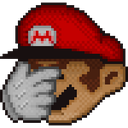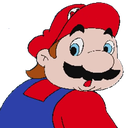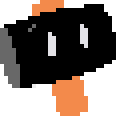belgium

Page: 1 2
On 2023-07-07 at 11:23:01
 we are all belgian now
we are all belgian nowOn 2023-07-07 at 11:23:51
Belgium.
 5
5 5
5 4
4 4
4 4
4 4
4 3
3 5
5 4
4 4
4 5
5 5
5 4
4 5
5 4
4 5
5 3
3 4
4 4
4 5
5 3
3 3
3 4
4 4
4 5
5 2
2 2
2 2
2 3
3 2
2 2
2 2
2 2
2 2
2 3
3 2
2 3
3 3
3 2
2 2
2 2
2 2
2 2
2 3
3 2
2 3
3 2
2 2
2 2
2 2
2 2
2 3
3 2
2On 2023-07-07 at 11:32:04
That cool

On 2023-07-07 at 11:32:40
Belgium,[A] officially the Kingdom of Belgium,[B] is a country in Northwestern Europe. The country is bordered by the Netherlands to the north, Germany to the east, Luxembourg to the southeast, France to the southwest, and the North Sea to the northwest. It covers an area of 30,528 km2 (11,787 sq mi) and has a population of more than 11.5 million,[11] making it the 22nd most densely populated country in the world and the 6th most densely populated country in Europe
i agreeOn 2023-07-07 at 11:33:12
That cool

yes

 1
1On 2023-07-07 at 11:35:08
That cool

yes

On 2023-07-07 at 11:37:44
Belgium is the best
On 2023-07-07 at 11:38:09
That cool

yes

On 2023-07-07 at 11:38:42
Belgium is the best
yes
On 2023-07-07 at 11:38:53
this topic is useless 

 1
1On 2023-07-07 at 11:39:43
this topic is useless 

no its not
 1
1On 2023-07-07 at 11:40:20
this topic is useless 

no its not
On 2023-07-07 at 11:41:03
this topic is useless 

no its not
Then don't talk here. If ur not interested get out. This is Belgium
On 2023-07-07 at 11:41:51
That cool

yes

On 2023-07-07 at 11:44:37
 we are all belgian now
we are all belgian nowOn 2023-07-07 at 11:45:56
 we are all belgian now
we are all belgian nowWhat are you talking about?
On 2023-07-07 at 11:46:53
 we are all belgian now
we are all belgian nowWhat are you talking about?
On 2023-07-07 at 11:47:24
 we are all belgian now
we are all belgian nowWhat are you talking about?
Jai juste changé le drapeau en soit, cest possible
On 2023-07-07 at 11:54:32
 we are all belgian now
we are all belgian nowWhat are you talking about?
Ja, warum?
On 2023-07-07 at 12:09:53
bonjour
Page: 1 2



 292 -
292 - 
 8850 pts ★ Expert
8850 pts ★ Expert 5682 pts ★ Novice
5682 pts ★ Novice

